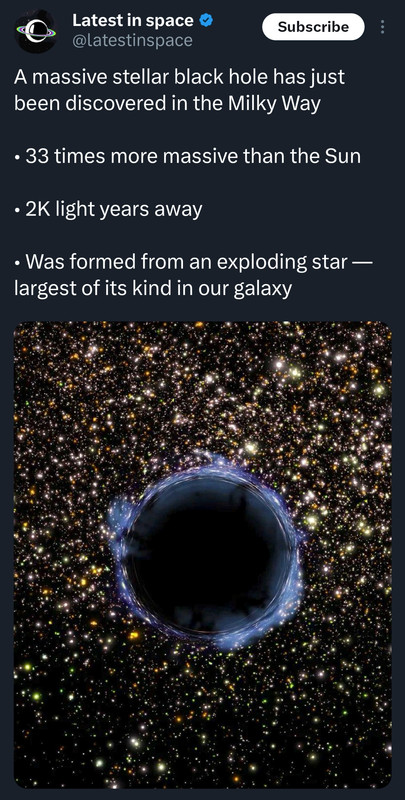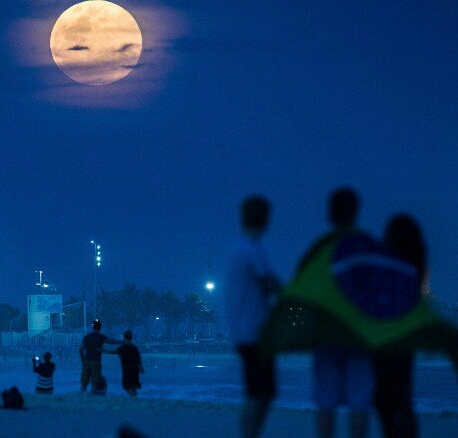You are using an out of date browser. It may not display this or other websites correctly.
You should upgrade or use an alternative browser.
You should upgrade or use an alternative browser.
I just saw the moon
- Thread starter TheMadDabber
- Start date
Bologna
(zombie) Woof.
Currently on the rise over Freeport, ME (amazing weather lately):



Plus collected random stuff:

 www.instagram.com
www.instagram.com

 www.instagram.com
www.instagram.com

 www.instagram.com
www.instagram.com

 www.instagram.com
www.instagram.com

 www.instagram.com
www.instagram.com

 www.instagram.com
www.instagram.com



Plus collected random stuff:

Deep In Space on Instagram: "Sun Vs largest Star Stephenson 2-18 #reels #reelsinstagram #reelsinsta #viral #viralreels #astronomy #astronomylover #science #universe #cosmos #astrophysics #star #stargazing #sun #stephenson2-18"
15K likes, 352 comments - deepinspace007February 23, 2024 on : "Sun Vs largest Star Stephenson 2-18 #reels #reelsinstagram #reelsinsta #viral #viralreels #astronomy #astronomylover #science #universe ...".
 www.instagram.com
www.instagram.com

PINEAL ACTIVATION 👁 on Instagram: "Magical Skies ☁️✨ Let’s Explore 🔭 @pineal.activation 📸 unknown #planet #planets #galaxy #galaxies #NASA #Spacex #hubble #space #science #scientist #sciences #astronomy #universe #telescope #cosmos #nebula #super
9,402 likes, 41 comments - pineal.activationApril 5, 2024 on : "Magical Skies ☁️✨ Let’s Explore 🔭 @pineal.activation 📸 unknown #planet #planets #galaxy #galaxies #NASA #Spacex #hubble...".
 www.instagram.com
www.instagram.com

Edgarebiz on Instagram: "A solar Eclipse view from a plane OMG!!!😍😍😍😍😍😍😍😍 #solareclipse #spacetok #fyp #space #viralvideo #fyp #viral #eclipse"
40K likes, 269 comments - edgarebizApril 8, 2024 on : "A solar Eclipse view from a plane OMG!!!😍😍😍😍😍😍😍😍 #solareclipse #spacetok #fyp #space #viralvideo #fyp #viral #e...". vocês, top, 5, keywords, extracted
 www.instagram.com
www.instagram.com

Travly | World News | Travel Deals | Guides on Instagram: "This past November, Florida witnessed a breathtaking “split-screen sunset”. A “split screen” sunset happens when clouds on the right half of the footage are higher in the sky and are thus sti
70K likes, 584 comments - travlyApril 10, 2024 on : "This past November, Florida witnessed a breathtaking “split-screen sunset”. A “split screen” sunset happens when clouds on the ri...".
 www.instagram.com
www.instagram.com

11K views · 1K likes | CBS 13 News on Instagram: "Check out this really cool time-lapse of the solar eclipse in Jackman, Maine! Thanks for sharing, Dylan Brown. #maine #mymaine #totalsolareclipse #solareclipse #moon #sun"
1,091 likes, 8 comments - wgmeApril 9, 2024 on : "Check out this really cool time-lapse of the solar eclipse in Jackman, Maine! Thanks for sharing, Dylan Brown. #maine #mymaine #totals...".
 www.instagram.com
www.instagram.com

Astronomy | Space | Universe on Instagram: "Swipe left to see exceptionally clear images of Jupiter, taken by NASA’s Juno Spacecraft during its orbit around the gas giant. The visuals are truly breathtaking! 🤯 Follow @thedeepastronomy for more ♥️ 📸
14K likes, 226 comments - thedeepastronomyApril 14, 2024 on : "Swipe left to see exceptionally clear images of Jupiter, taken by NASA’s Juno Spacecraft during its orbit around the gas giant. The vis...".
 www.instagram.com
www.instagram.com
Last edited:
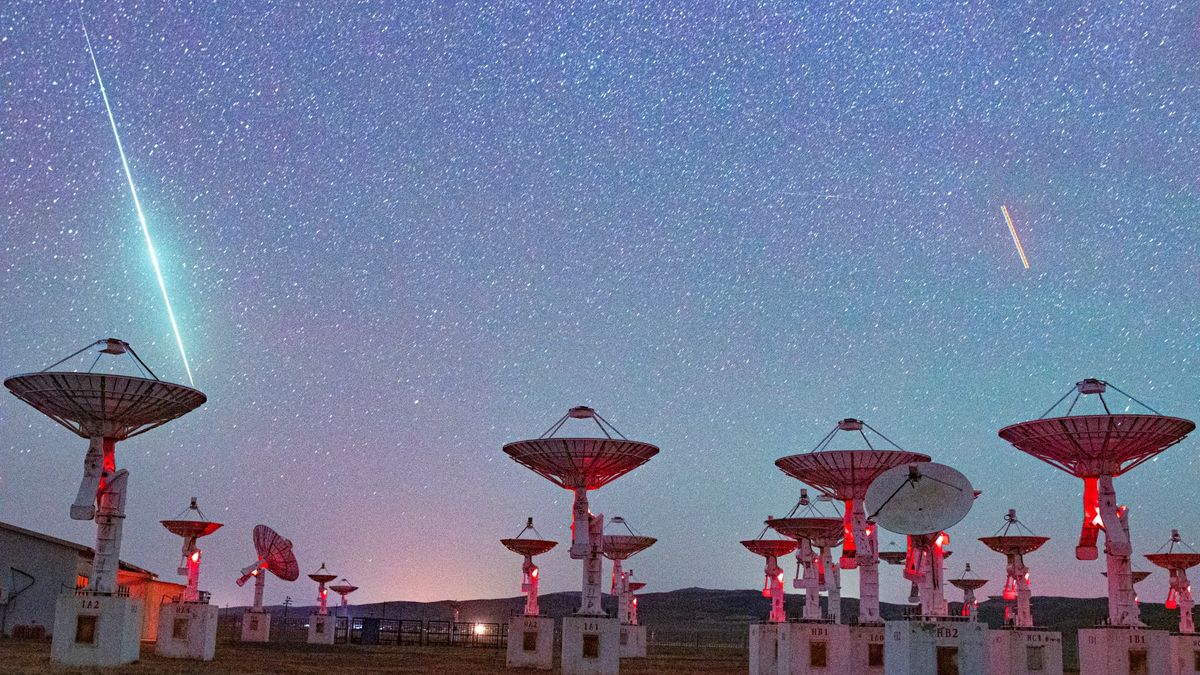
The Lyrid meteor shower peaks this weekend, but don't expect much this year
Unfortunately, 2024 will not be a good year to look for these "shooting stars."
Bologna
(zombie) Woof.


From:

SCIENCE NATURE on Instagram: "The Pink Moon will be visible from various countries around the world, including the India, United States, Canada, the United Kingdom, Australia, and many others. Essentially, anywhere with clear skies and a view of the
21K likes, 60 comments - sciencenatureeApril 2, 2024 on : "The Pink Moon will be visible from various countries around the world, including the India, United States, Canada, the United Kingdom, Au...".
 www.instagram.com
www.instagram.com
Edit: Plus the usual collected tidbits thought worthy of only you, yes, YOU (and my daughter
 ):
):
Spaceman | Space Enthusiast on Instagram: "A recurring astronomical event, known as a nova, is expected to occur between now and September in the constellation Corona Borealis. This event, which happens approximately every 80 years, involves a bina
12K likes, 144 comments - spaceman.inApril 6, 2024 on : "A recurring astronomical event, known as a nova, is expected to occur between now and September in the constellation Corona Borealis. T...".
 www.instagram.com
www.instagram.com

Space | Cosmos | Galaxy on Instagram: "No, this is not a computer-generated image🤯 (📸 credits: Francisco Negroni) This image shows a rare moment of the eruption of the Volcano Calbuco with truly spectacular forces of nature that make you stare at t
20K likes, 170 comments - spaceinnutshellApril 20, 2024 on : "No, this is not a computer-generated image🤯 (📸 credits: Francisco Negroni) This image shows a rare moment of the eruption of the ...".
 www.instagram.com
www.instagram.com

1.2M views · 113K likes | Space Eve on Instagram: "Mars 360° Mars Curiosity Rover with real sounds from the surface. Credit by NASA / NASAJPL NASA / NASAJPL 📸📸 Tag a friend who needs to see this! Dive into the cosmos with us! 🚀✨ Follow @spaceeves
114K likes, 3,595 comments - spaceevesFebruary 1, 2024 on : "Mars 360° Mars Curiosity Rover with real sounds from the surface. Credit by NASA / NASAJPL NASA / NASAJPL 📸📸 Tag a friend who ne...".
 www.instagram.com
www.instagram.com

Astronomy on Instagram: "Universe size comparison 3d Credits: Harry Evett"
15K likes, 241 comments - astronomybasicsMarch 28, 2024 on : "Universe size comparison 3d Credits: Harry Evett".
 www.instagram.com
www.instagram.com
Last edited:
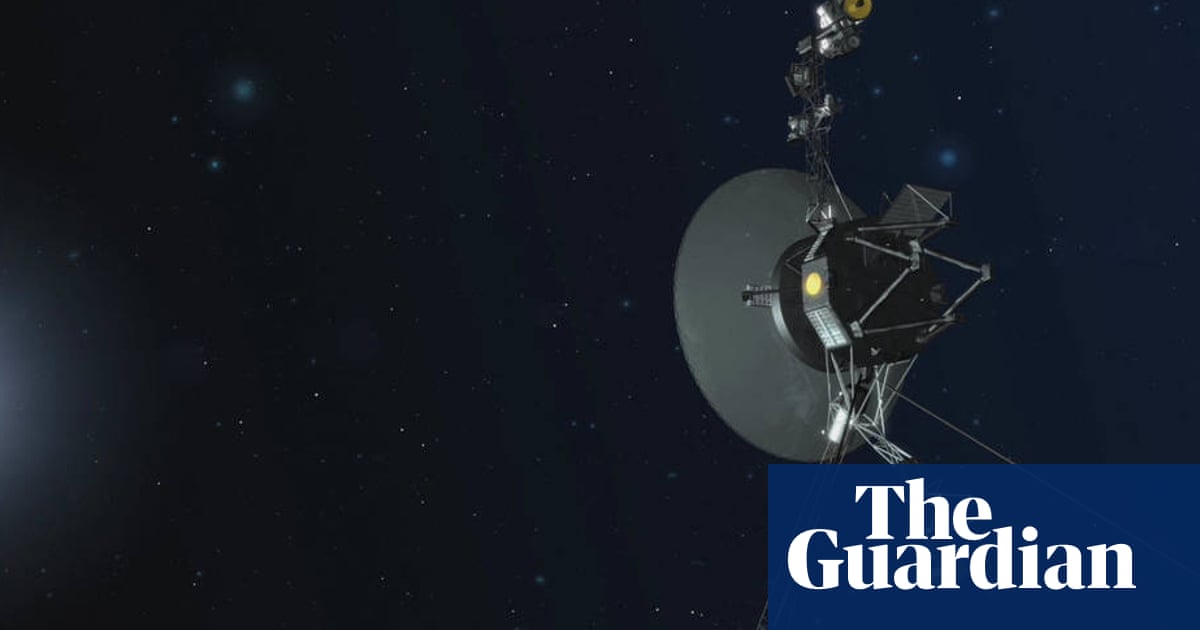
Voyager 1 transmitting data again after Nasa remotely fixes 46-year-old probe
Engineers spent months working to repair link with Earth’s most distant spacecraft, says space agency
Jill NYC
Portable Hoarder
The fact that it is running on 1977 technology, less than 1mb of memory & these engineers figured out initial steps to reprogram it from 15 billion miles away (let alone that fact it is still functioning this many years later)
Voyager 1 transmitting data again after Nasa remotely fixes 46-year-old probe
Engineers spent months working to repair link with Earth’s most distant spacecraft, says space agencywww.theguardian.com
I mean - wow!
NYC_Frank
"A man with no vices is a man with no virtues"
The fact that it is running on 1977 technology, less than 1mb of memory & these engineers figured out initial steps to reprogram it from 15 billion miles away (let alone that fact it is still functioning this many years later)
I mean - wow!
The famous picture “Pale Blue Dot” ... Earth captured 3.7 billions miles away from Voyager 1 in 1990. Simply an amazing little spacecraft continues on it's journey

bulllee
Agent Provocateur
CrazyDiamond
Crosseyed & Painless
CrazyDiamond
Crosseyed & Painless
A jewel of the southern sky, the Great Carina Nebula is more modestly known as NGC 3372. One of our Galaxy's largest star forming regions, it spans over 300 light-years. Like the smaller, more northerly Great Orion Nebula, the Carina Nebula is easily visible to the unaided eye. But at a distance of 7,500 light-years it lies some 5 times farther away. This stunning telescopic view reveals remarkable details of the region's glowing filaments of interstellar gas and obscuring cosmic dust clouds. The Carina Nebula is home to young, extremely massive stars, including the still enigmatic variable Eta Carinae, a star with well over 100 times the mass of the Sun. Eta Carinae is the bright star above the central dark notch in this field and left of the dusty Keyhole Nebula (NGC 3324).
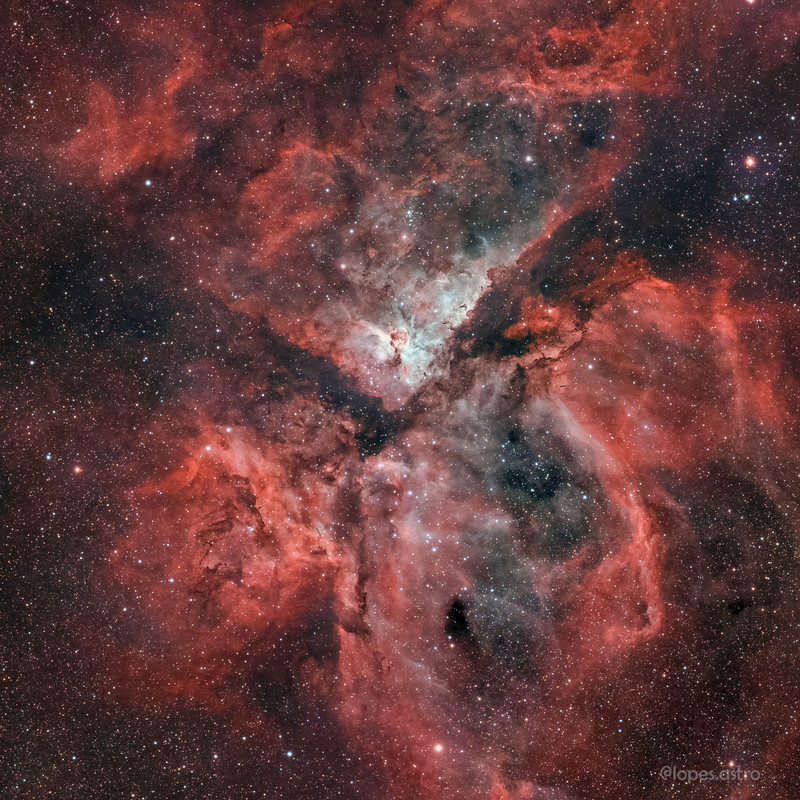
This wide-field view, created from images forming part of the Digitized Sky Survey 2, shows the rich star clouds in the constellation of Norma (the Carpenter’s Square) in our Milky Way galaxy. The beautiful nebula NGC 6164/6165, also known as the Dragon’s Egg, appears in the center of the image. (22MB image)
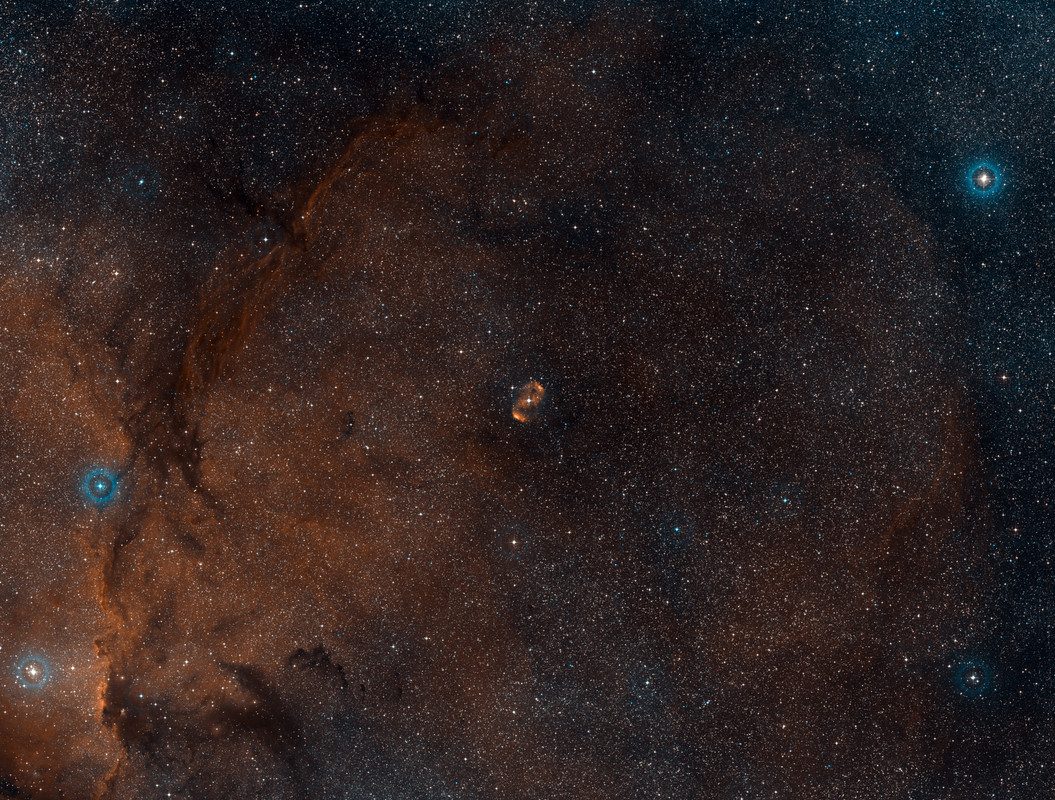
How did a star form this beautiful nebula? In the middle of emission nebula NGC 6164 is an unusually massive star. The central star has been compared to an oyster's pearl and an egg protected by the mythical sky dragons of Ara. The star, visible in the center of the featured image and catalogued as HD 148937, is so hot that the ultraviolet light it emits heats up gas that surrounds it. That gas was likely thrown off from the star previously, possibly the result of a gravitational interaction with a looping stellar companion. Expelled material might have been channeled by the magnetic field of the massive star, in all creating the symmetric shape of the bipolar nebula. NGC 6164 spans about four light years and is located about 3,600 light years away toward the southern constellation Norma.

Located in the picturesque southern constellation of Centaurus, the Gum 41 nebula takes up most of this image brought to you by the VLT Survey Telescope, hosted at ESO’s Paranal Observatory in Chile. Let’s take a closer look at this intricate structure.
Set against a colorful backdrop of stars, Gum 41 is a pleasantly symmetric example of a Strömgren sphere: a shell of hydrogen gas atoms glowing in rosy hues due to the radiation of the dazzling central star. While this star, called HD 100099, may appear to be one very bright object, it is actually thought to be two young, massive stars orbiting in such a tight embrace that they cannot be separated at the scale of this image.Gum 41 is also a member of a much larger region, affectionately called the Running Chicken Nebula. (17MB image)
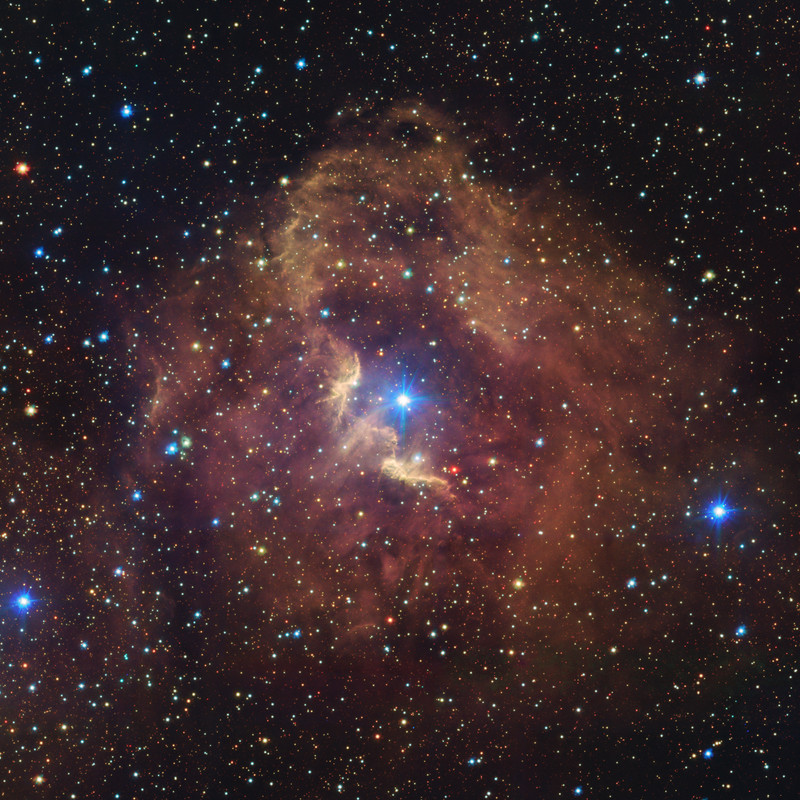
@NYC_Frank The explosion is over, but the consequences continue. About eleven thousand years ago, a star in the constellation of Vela could be seen to explode, creating a strange point of light briefly visible to humans living near the beginning of recorded history. The outer layers of the star crashed into the interstellar medium, driving a shock wave that is still visible today. The featured image captures some of that filamentary and gigantic shock in visible light. As gas flies away from the detonated star, it decays and reacts with the interstellar medium, producing light in many different colors and energy bands. Remaining at the center of the Vela Supernova Remnant is a pulsar, a star as dense as nuclear matter that spins around more than ten times in a single second.
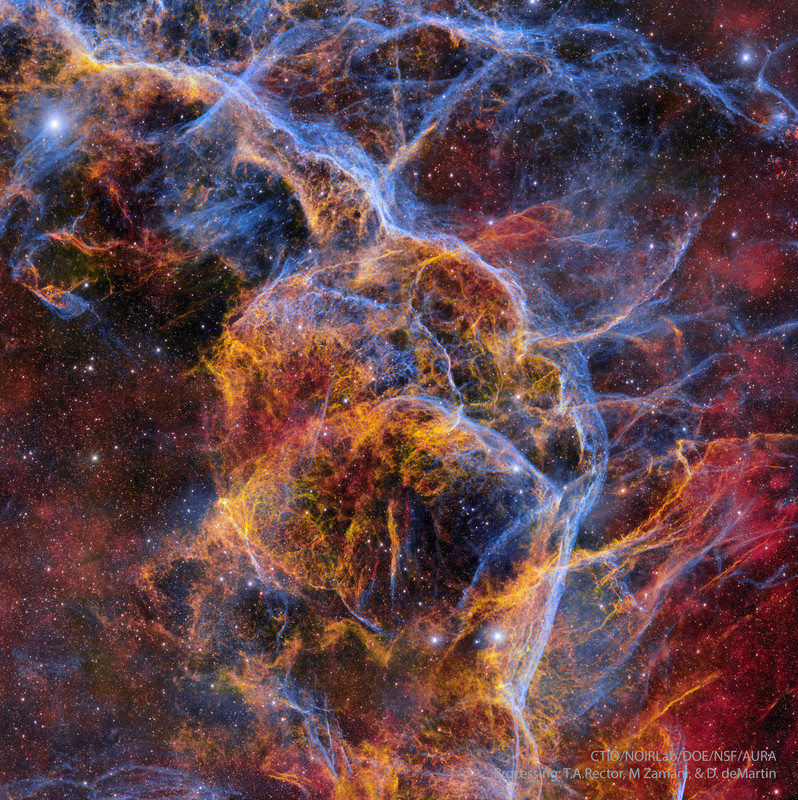

This wide-field view, created from images forming part of the Digitized Sky Survey 2, shows the rich star clouds in the constellation of Norma (the Carpenter’s Square) in our Milky Way galaxy. The beautiful nebula NGC 6164/6165, also known as the Dragon’s Egg, appears in the center of the image. (22MB image)

How did a star form this beautiful nebula? In the middle of emission nebula NGC 6164 is an unusually massive star. The central star has been compared to an oyster's pearl and an egg protected by the mythical sky dragons of Ara. The star, visible in the center of the featured image and catalogued as HD 148937, is so hot that the ultraviolet light it emits heats up gas that surrounds it. That gas was likely thrown off from the star previously, possibly the result of a gravitational interaction with a looping stellar companion. Expelled material might have been channeled by the magnetic field of the massive star, in all creating the symmetric shape of the bipolar nebula. NGC 6164 spans about four light years and is located about 3,600 light years away toward the southern constellation Norma.

Located in the picturesque southern constellation of Centaurus, the Gum 41 nebula takes up most of this image brought to you by the VLT Survey Telescope, hosted at ESO’s Paranal Observatory in Chile. Let’s take a closer look at this intricate structure.
Set against a colorful backdrop of stars, Gum 41 is a pleasantly symmetric example of a Strömgren sphere: a shell of hydrogen gas atoms glowing in rosy hues due to the radiation of the dazzling central star. While this star, called HD 100099, may appear to be one very bright object, it is actually thought to be two young, massive stars orbiting in such a tight embrace that they cannot be separated at the scale of this image.Gum 41 is also a member of a much larger region, affectionately called the Running Chicken Nebula. (17MB image)

@NYC_Frank The explosion is over, but the consequences continue. About eleven thousand years ago, a star in the constellation of Vela could be seen to explode, creating a strange point of light briefly visible to humans living near the beginning of recorded history. The outer layers of the star crashed into the interstellar medium, driving a shock wave that is still visible today. The featured image captures some of that filamentary and gigantic shock in visible light. As gas flies away from the detonated star, it decays and reacts with the interstellar medium, producing light in many different colors and energy bands. Remaining at the center of the Vela Supernova Remnant is a pulsar, a star as dense as nuclear matter that spins around more than ten times in a single second.

CANtalk
Well-Known Member
Big zoom available




I captured the Eye of Sauron 52 million light-years from us
https://www.reddit.com/r/space/comments/1cfcu0v

Bologna
(zombie) Woof.

Zoom into the Horsehead Nebula
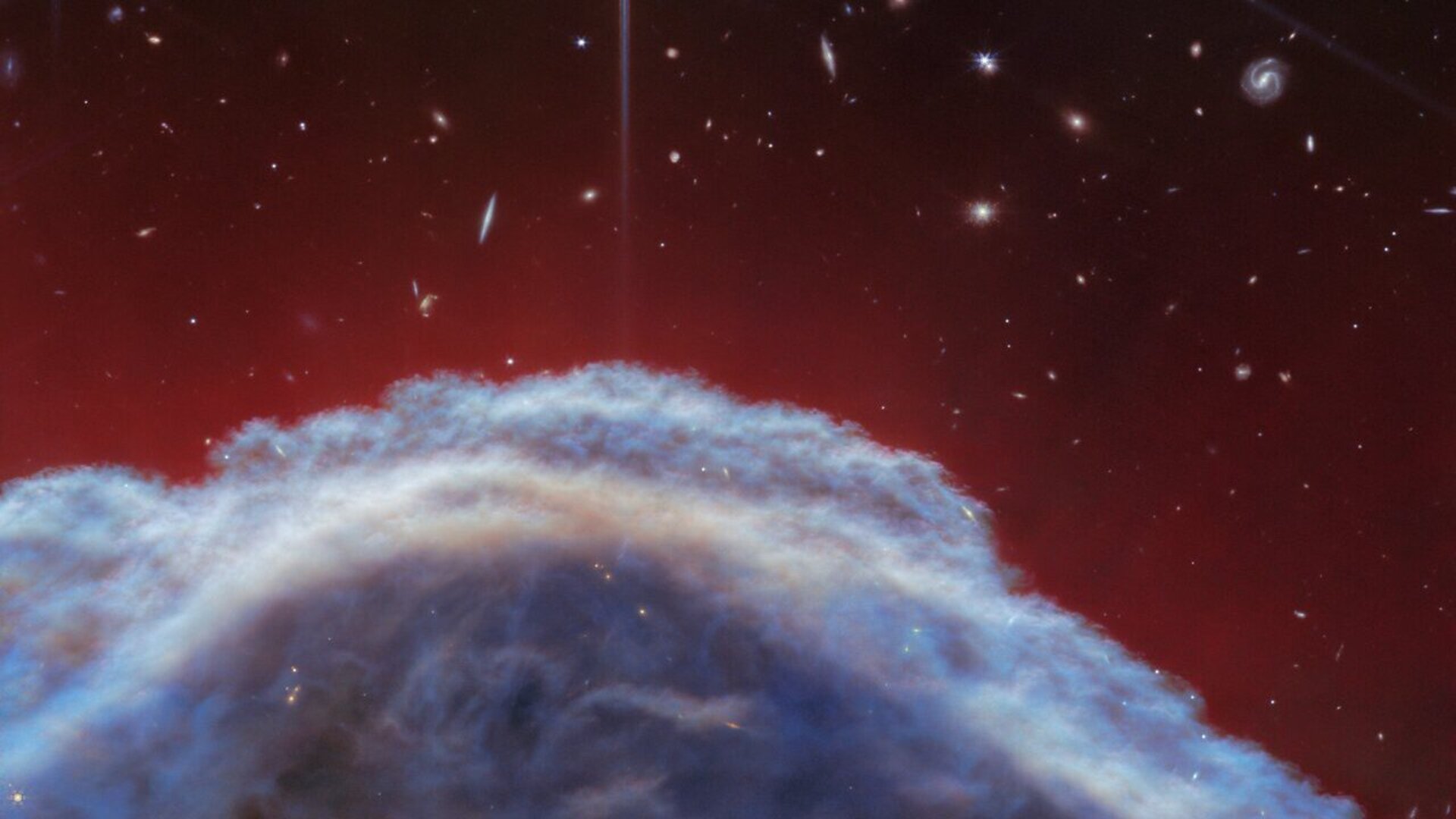
Webb captures iconic Horsehead Nebula in unprecedented detail
The NASA/ESA/CSA James Webb Space Telescope has captured the sharpest infrared images to date of one of the most distinctive objects in our skies, the Horsehead Nebula. These observations show a part of the iconic nebula in a whole new light, capturing its complexity with unprecedented spatial...
www.esa.int

